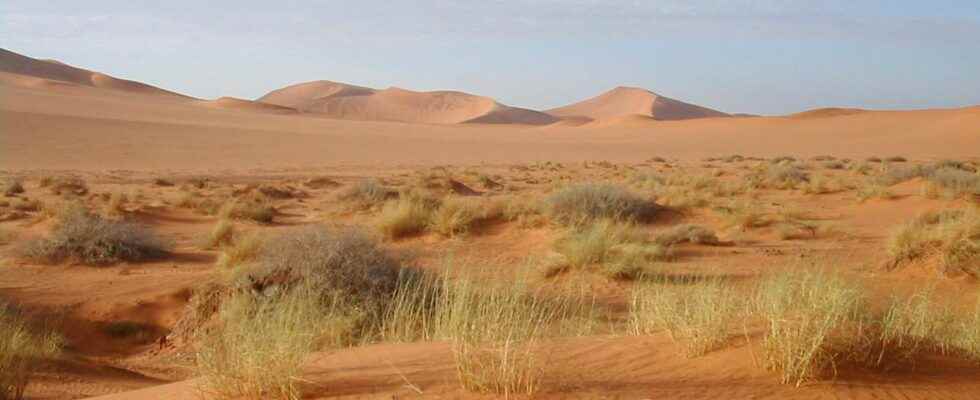You will also be interested
[EN VIDÉO] Interview with Jean Jouzel: What will be the repercussions of global warming on our society? In an interview, Jean Jouzel, a famous paleoclimatologist, tells us about the repercussions of global warming on our lifestyles.
10,000 years ago, the Egyptian population living in the Nile valley began a sudden migration towards central Egypt, in the region of the present Sahara. Many data suggest that this migration was caused by a modification of the climate, and in particular by a significant change in the rate of precipitation. This period is also referred to as the African humid period (-14,800 to -5,500 years), characterized by strong monsoons especially in North African regions. These heavy rains would have favored the growth of vegetation, the establishment of numerous rivers and the development of lakes. The Sahara, previously arid, would thus have been transformed little by little into a large savanna. Conversely, the Nile Valley would have become a rather marshy area, subject to strong floods. This region becoming inhospitable, the populations would then have started a migration of several hundred kilometers, towards the center of the Sahara, then much more welcoming.
The study of paleo-rivers to understand the climate of the past
However, this period remains poorly constrained. To better clarify the climatic conditions that prevailed during this wet period, a research team led by Abdallah S. Zaki, from the University of Geneva, studied several rivers fossils, preserved in southern Egypt. The sediments of these ancient rivers indeed contain many clues allowing the characterization of the fluvial dynamics and its variations over time and therefore make assumptions about the climate of the past in this now desert region.
Scientists have thus studied the sedimentary deposits of six paleo-rivers, ten thousand years old, whose fossilized channels have been found in the vicinity of Lake Nasser. Because of the process of erosion, which abraded the plain over the millennia, these paleo-channels, whose consolidated sediments are more resistant, are now found in the form of small hills.
These ancient riverbeds are filled with cemented gravels and cobbles, the shape, size and distribution of which give a lot of information on past hydrodynamics. For example, the presence of large pebbles indicates that the current was strong enough to carry them and helps to estimate the debit of the river, as well as the depth and width of the channel. The study of the drainage basin makes it possible to calculate the quantity of water brought by runoff. All of these data finally make it possible to obtain the rate of precipitation responsible for the sedimentary deposits observed.
An increase in flooding linked to global warming
The results, published in the journal Quaternary Science Reviewshave been coupled with dating by carbon 14 and by another technique using quartz luminescence to obtain the ages of sediments deposited in the bottom of paleo-channels. The researchers thus confirmed that the six paleo-rivers were active 13,000 – 5,000 years ago, at the height of the African humid period. The results show that the rains were then very intense, with precipitation rates of 55 to 80 millimeters per hour. Compared to the previous, drier period, this type of rain event was three to four times more frequent, indicating a major change in the climate at that time in this region of the world.
This sudden increase in the frequency and intensity of the rains, certainly causing significant flooding, could therefore well be the reason for the great migration observed in the Nile Valley at this time. This climate change and hydrological would be associated with a 7°C increase in the temperature of theair In the region. Scientists believe that this water regime marked by frequent flooding could have lasted 3,000 years.
These observations can easily be paralleled with the climatic changes we are currently experiencing. This is yet another example of how the climate system responds to a rapidly warming atmosphere, and the consequences this can have for people.
Interested in what you just read?
